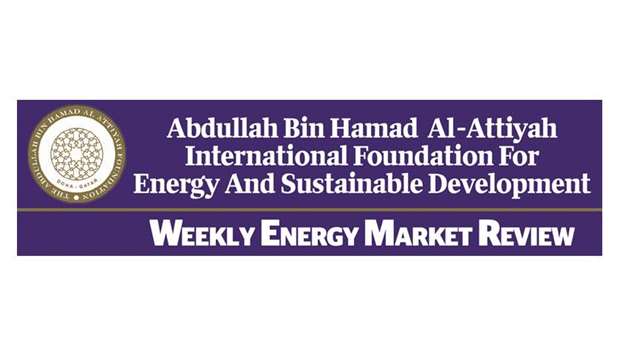Oil
Benchmark crude oil futures completed a sixth weekly decline last week losing 5% and 6% for Brent and WTI respectively. The end of last week saw prices paring losses modestly, which means some kind of stabilisation even if only temporary. The same bearish factors of the previous week were still dominating the market, including slower demand growth and worries of oversupply. The current oversupply is mainly driven by the increase in production from Opec and other producers initiated originally to compensate for the Iranian supply loss, but finally the US sanction waivers led to the removal of less oil from the market. The record US production reaching new highs week-in week-out and the growth in non-Opec supply is exacerbating even more the supply concerns, especially for the first half of 2019.
The market is still seeking a price floor and it is very unlikely that this quest is already over as present market assessments point to a sizeable supply excess until at least the first half of 2019. Opec countries are expected in their next meeting in December to discuss a potential cut of 1.4mn bpd to reverse the situation. However, the International Energy Agency, in its latest report estimate, the implied stock build for the first half of 2019 to two million bpd.
Gas
Asian spot LNG prices for December delivery fell 2% last week as demand was squeezed by a milder weather in North Asia and a low availability of tankers for spot trade, despite some Japanese buyers still being active in the market. The low availability of vessels was caused by the higher shipping rates and vessels being locked in for longer time charters. In the expectation of higher prices, some sellers are keeping 15 to 20 tankers floating in Asian waters with at least 2 mcm of LNG worth $400mn. China overtook Japan this year (January to October) as the world’s largest gas importer, but its purchases have been disappointing this winter compared to last year, as it is maximising its domestic production and it has boosted its storage capacity.
In the US, Henry Hub natural gas futures soared by 15% last week to reach a four-year high. The convergence of unusual cold weather and low stocks supported the price surge, but the last week of November is expected to record a warmer weather. Meanwhile, UK gas futures rose by 7% on colder weather forecasts and low wind generation. However, send-out rates from LNG terminals are expected to rise after two vessels docked last week, and three more tankers expected by month-end.
n This article was supplied by the Abdullah bin Hamad Al-Attiyah International Foundation for Energy and Sustainable Development.

GROWING


